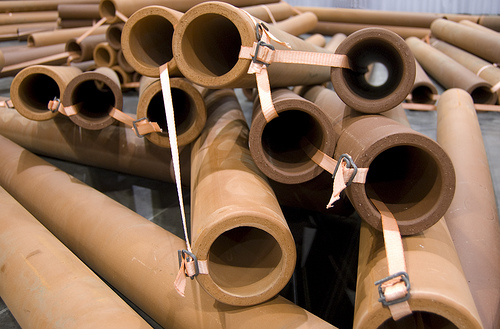After the discovery that water could be moved into houses for personal uses instead of the traditional roman pool, it became an efficient and preferred mode of conveyance of this precious commodity. The idea was to have water for every household to increase citizen comfort and responsiveness to authority. If you made the people happy, then everything would go well; you have to hand it to the Romans for such thinking.
Since they primarily used gravity as a mode of transport, the piping was normally made of wood and this went on until the Iron Age when metal was easily molded to form anything from weapons to utensils. At around this time, humankind discovered that lead did not rust when it were exposed to water and this led to the choice of this metal as a means of conveyance. This is where the story begins:
• Lead
This is metal of its kind; it is almost the only metal without galvanization or being alloyed that does not rust when exposed to humidity, water and oxygen. Lead was used in the early and late nineteenth century to convey water to the public after it had been put through various treatments to make it potable. This method was efficient until the epidemic of lead poisoning was detected in America and Europe.
Lead poisoning was caused by the interaction of water and the lead piping. This meant that the water carried some elements of the lead that led to numerous child deaths and overall illnesses. Once detected, the use of lead as a zipping material was discontinued. The only place this metal is still in use is in the conveyance of waste material to sewerages.
• Ceramic
The use of ceramic as a mode of conveyance is not wide spread because of its brittle nature; it can easily break. However, for conveying water or any other fluid, it provides the cleanest source of water because it is no prone to rust or fungus growth on its walls. Blockages are rear because of the smooth nature of the ceramic pipes. They are made out of ceramic material, the same as the material used to make your favorite china but of higher quality and heavier.
• Metal alloys
This is the most common method of piping because it is cheap and strong at the same time. The metal alloys used are designed to last a long time and come in different gauges depending on the volume and pressure of the water or fluid they will be conveying. They can be used to convey large volumes for example to towns or small volumes such as the case of pipes conveying water within the house or office. There are various alloys used but they should fulfill the criteria to ensure that the water or fluid being transmitted is not contaminated.
• Plastic
The use of plastic, or various forms of plastic polymers has become popular because they are more flexible than the metal alloys they are safe and cheaper. They are also easy to install. Just as in the alloyed metal, they come in different sizes and gauges and can be the best alternative where metal alloys are not affordable. The only disadvantage is that they can give in to pressure unlike the metal alloys.
